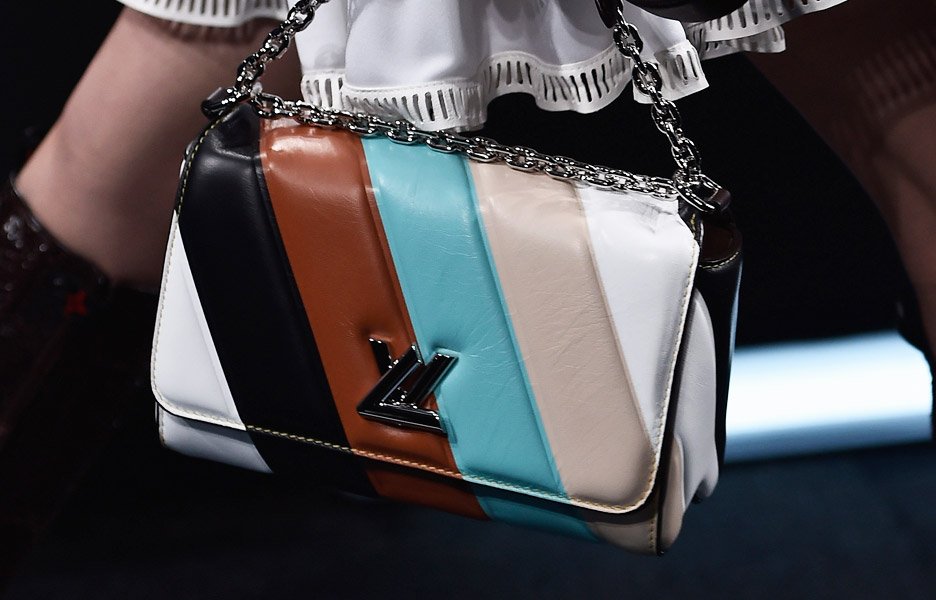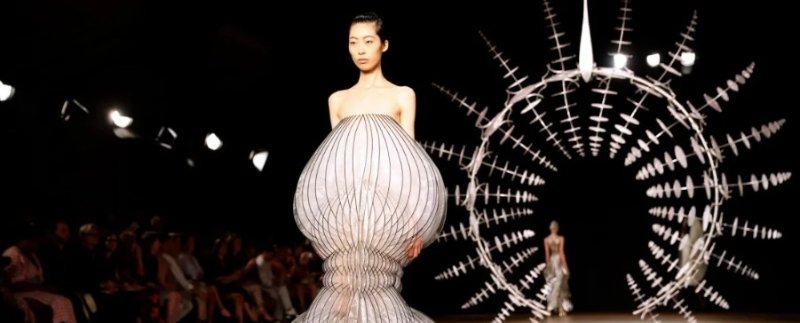Runway art has transformed fashion into a space for visual and conceptual experimentation. Today, fashion shows are not just clothing presentations but exhibitions combining design, performance, and artistic narrative.
Designers draw inspiration from paintings, sculptures, photography, and contemporary installations, creating collections that engage directly with visual aesthetics and culture. Audiences, therefore, do not merely watch a show—they experience a complete artistic event.
Observing major fashion weeks in Paris, Milan, and New York reveals that every collection is carefully designed to evoke emotions. Artistic references are creatively incorporated, from prints based on masterpieces to silhouettes reminiscent of famous sculptures.
As Adam Geczy states in Fashion and Art, published in 2011, “the runway has become a space where fashion and art meet, allowing clothing design to be elevated to a conceptual level.”
When Fashion and Art Merge
The fusion of fashion and art enables designers to create pieces that go beyond traditional clothing. A dress can become a walking canvas, carrying meanings and visual narratives. For example, Louis Vuitton’s Spring/Summer 2015 collection incorporated patterns inspired by contemporary artists, turning garments into artistic objects.

Museums and galleries directly influence this intersection. Renowned institutions such as MoMA in New York and the Victoria and Albert Museum in London have hosted exhibitions exploring fashion as art, demonstrating that each piece can be studied as a visual artwork. Many designers also draw from historical collections and artistic movements to create innovative designs, making fashion shows itinerant exhibitions.
According to The Art of Fashion: Modern Designers on the Runway by Mary Lisa Gavenas, published in 2001, runway art is not limited to aesthetics; it conveys concepts, emotions, and cultural critiques, allowing audiences to engage with fashion on a deeper, intellectual level.
Techniques to Turn the Runway into an Exhibition
Transforming fashion into art requires creative and strategic techniques. Designers use prints inspired by paintings, embroidery that replicates artistic textures, and cuts that resemble sculptures. Alexander McQueen is a classic example: his collections incorporated dramatic elements and theatrical settings, making each show resemble a moving art installation.
Collaborations between artists and brands also enhance this relationship. Partnerships like Prada and Damien Hirst demonstrated that contemporary art can inspire highly original and sought-after collections. These experiences allow audiences to explore fashion as cultural expression, creating lasting visual memories.
Additionally, technology has opened new possibilities. Digital projections, augmented reality, and even NFTs are being integrated into shows, allowing viewers to interact with garments and artistic concepts through multiple layers of perception. This approach redefines what it means to experience runway art and expands fashion’s cultural impact.
Cultural Impact and the Future of Runway Art
Runway art influences not only fashion aesthetics but also cultural and social perceptions. By incorporating artistic references, designers comment on contemporary issues such as identity, the environment, and technology. As noted in Fashion: A History from the 18th to the 20th Century by Kyoto Costume Institute, published in 2013, “fashion shows can be seen as temporary exhibitions that reflect and question social, political, and cultural values.”
In the future, the integration of fashion and art will likely deepen. With advancements in artificial intelligence, 3D printing, and interactive digital platforms, designers will be able to create even more immersive experiences. Fashion will continue to converge with art, not only as an aesthetic inspiration but also as a vehicle for expression and cultural transformation.



